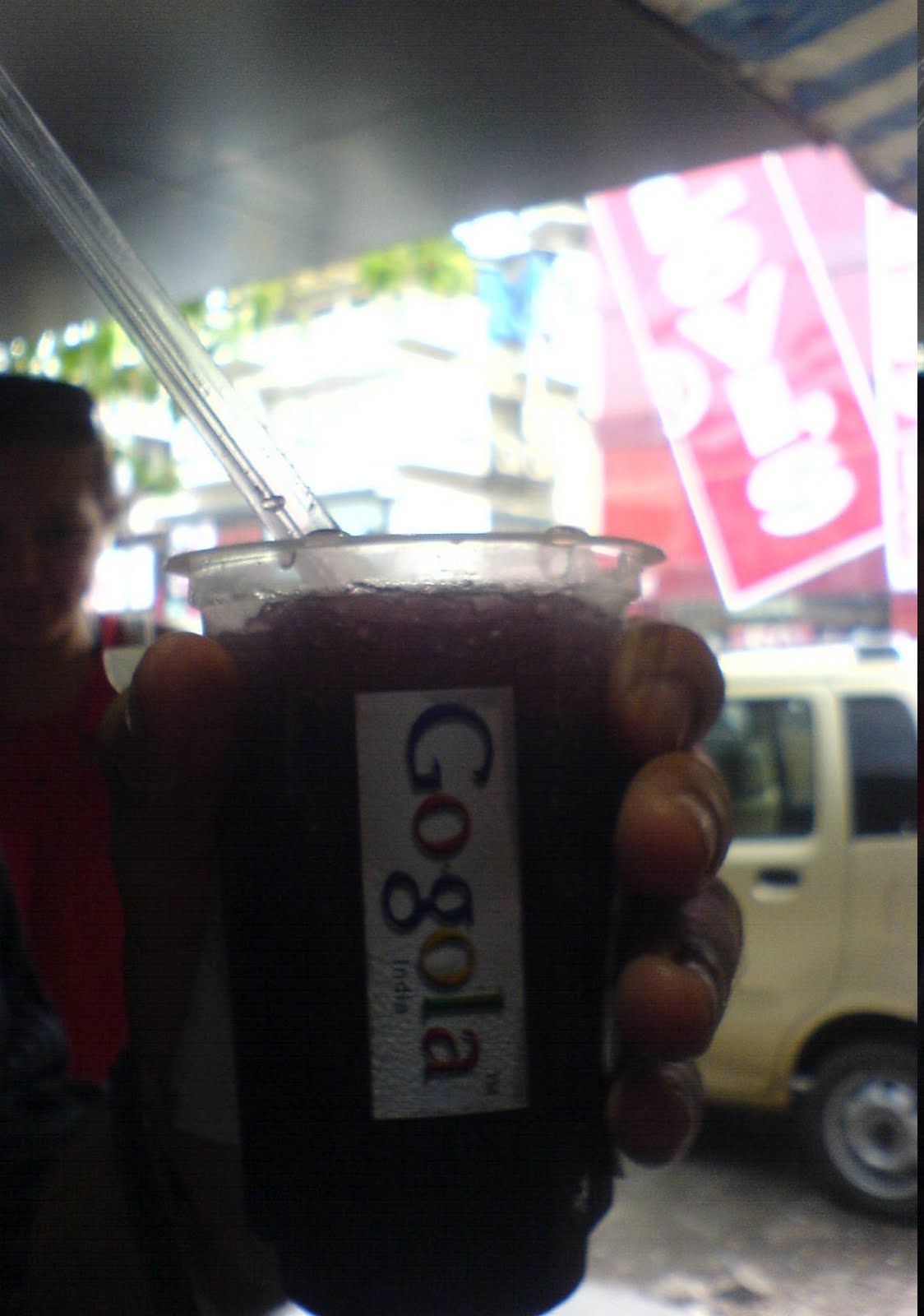
Many times, you might have seen me mentioning
Guy Kawasaki,
Seth Godin and few other writers/Entrepreneurs , whom I really admire

.But after reading
Dabawalas by Mr Shrinivas Pandit(or should I say Shrinivas Sahib as he is mentioned in the book),he has also joined the list of my favourite authors.Before jumping into some of the intersting learnings from the book,let me tell you something about the book.
Sneak preview of “Dabawalas By Mr Shrinivas Pandit”:
For some of the people,Dabawalas would be a new terminology.Daba is loosely called as Tiffin and Dabawalas is a story about a 115 year old successful business operation carried out by 5000 semi-literate people.These are the people who deliver Tiffin(Daba) from one place to another in Mumbai working under very tight schedule.You can know more about Daba here.Not to forget,they are Six Sigma certified about which you can find here
It is a book which focuses on their growing business and how the business is managed,though there is no designated CEO for the business.For people who have lived and traveled in the packed trains of Mumbai,this would be a very familiar sight in the luggage compartments of the local trains.For more information on Dabawalas,check this post on Mangalore City Blog
Insight into the book:
The book is written by Shrinivas Pandit and is based on a conversation between Shrinivas(called S),Anita(A),Raghu(R),Ganga(G) on the entire Daba business.So who are A,R,G:
Anita Dalal – Refered “A” is a journalist and a well known business consultant based in Mumbai
Raghu and Ganga- Refered “R” and “G” respectively,are the dabawalas working for “Nutan Mumbai Tiffin Box Supplier’s Charity Trust”
The book gives an insight into some of the business strategies followed by dabawalas along with the ethics they follow,how they win customers by winning their hearts and last but not the least,when should we accept innovation and how it can be used for the betterment of the business.The book is very well organized with a message being communicated with every chapter.The only possible drawback could be Marathi being used in the book(though they have translated in English but could be a turn-off for some of the readers).
At end of every chapter,there is a section called “Take Aways”(or learnings) which I found very striking and hence felt that I should list some of them here….so keep on reading.
Take Aways from the book:
Note:The post would be long yet interesting…so do read it completely
1.
Current Practice:
In last 25-30 years,people have become habituated to eating outside food for lunch,out of necessity,convinience or fashion
Current Opportunity:
With increased health conciousness and basic preference for home cooked food,there is an opportunity to start newer,cost effective delivery services.
2.
Current Practice:
Most of the organizations,whether public,private,public or cooperative sectors,run on the lines of a master-servant relationship.The employees do not have a stake in the organization’s survival and thus,do not develop Entrepreneurial skills or passion
Current Opportunity:
When the organization is set up on the principle that everybody is a shareholder;there is passion,commitment and responsibility for developing business in cooperation with other groups
3.
Current Practice:
A large number of business leaders do not study the supply demand market economics.When massive waves of change hit the market,they crumble.They fail to forecast changing scenarios and what would be durable in such situations
Current Opportunity:
Leaders with vision are constantly looking out for trends so as to keep their bread and butter lines of business intact.They are focused on finding what is durable in the times of change.They act upon strengthening their niche areas with constant innovation.
4.
Current Practice:
Very few organizations study their supply chain management practices.Such study from procurement of raw materials to finished product show many on-line variables are outsourced in this logistically interdependent world.It identifies the gaps that need to be met for timely delivery.
Current Opportunity:
Organizations that have an end to end broad perspective of their supply chain management are able to do a lot of cost-cutting and quality improvement in their deliverables
5.
Current Practice:
The work in any business organization consists of endless meetings,emails,phone calls combined with clutter of mechanization and computerization.The resultant service product at the low end of the technological structure is neither very efficient nor cost effective to the customer.
Current Opportunity:
Use technology when needed not otherwise.We need not import every work practice from abroad.Think global about the efficiency through automation and computerization,but act local to increase efficiency through creative efforts like dabawalas using cycles instead of mopeds.
6.
Current Practice:
Most of the organizations have a centralised decision-making for resource allocation and business development.This leads to deskilling of employee capabilities,apart from lowering their motivation to complete tasks independently
Current Opportunity:
Decentralize to empower and deliver your product at the minimum cost to the customer.If you have a mindset based on the Gandhian model of interdependent co-creation,where machine comes next to man,it is possible to provide cost effective service to the customers.
7.
Current Practice:
In the current scenario,the mortality of the organizations is high because many times the people there do not change their ways.They continue past practices even when the ground reality changes drastically.
Current Opportunity:
Organizations that survive this change are those where people are prepared to learn new techniques amd skills to enhance their levels of competence.They cherish the old methods,but embrace new ways of doing things.
8.
Current Practice:
Services have become prohibitive in cost,unreliable and inefficient for customers at the middle and bottom of the social pyramind.This is because of the excessive use of modern gadgetry,excessive consideration of ROI and the indifferent attitiude of the personnel in most organizations.
Current Opportunity:
In the hierarchy of human needs,a cost effective and affordable service is of prime importance,when we are sandwiched by high unemployment rates and an aging population.The huge demand for such services can be met by adopting a customer-centric approach based on the principle of subsistence and not profit
9.
Current Practice:
The customer service,whether of mobile phone or washing machine companies,cable operators or any others is expensive,time consuming and not very dependable.
Current Opportunity:
Any company providing service to it’s customers that sincerely believes customer is God,will make it’s service delivery dependable.In doing so,it will win customer loyalty.
10.
Current Practice:
Bad service brings down the brand value of a company so much that it loses it’s competitive edge.
Current Opportunity:
Run your service set-ups,whether in-company or outsourced on the principle of efficient service.Ensure that the mindset of the staff is devotional towards work.
11.
Current Practice:
Many organizations make tall claims about their record of exemplary service to customers but real feedback does not support such claims.
Current Opportunity:
There can be global recognition for an error free durable local service.The local bonding between service providers and clients leads to global bonding.Entrepreneurs,VC’s and business leaders all over the world looking for innovative ideas can find a few there.
12.
Current Practice:
If you look at the mountains of complaints made by customers receiving any kind of actual service,you realise that service for the most part is impersonal and careless
Current Opportunity:
The service sector business has 50% growth potential in the total future economic growth.To realise this,we need to transform our mindset and start providing service that solves customer problems.
Finally, an interesting saying from Narayan Murthy : “Technology is about reducing cost,improving productivity and bringing comfort to the people”.Who needs that more than the poor?“
Some of the points may look disconnected but still each and every takeaway has a message which helps in business improvement.Before I close this long post,I would say it is an excellent resource at a very cheap price(Rs 145),which touches the crux of business (something like what Dr C K Prahalad had done in “Fortune At the Bottom of the Pyramid”)






